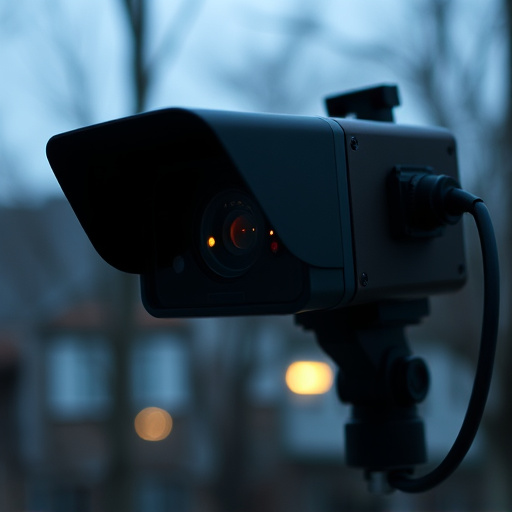Motion detecting cameras offer a discrete and effective solution for elderly monitoring, capturing movement and distinguishing human motion from environmental triggers to minimize false alarms. Strategically placed in common areas or bedrooms, they alert caregivers instantly upon detecting unusual patterns or potential risks. However, setting up such networks raises significant ethical concerns and privacy issues; informed consent from monitored individuals is crucial, with emphasis on transparency, strict access control, secure data storage, and regular policy audits to maintain trust and respect individual dignity.
“In today’s digital age, ensuring the safety and well-being of our elderly population is a top priority. One effective tool in this regard is motion detecting cameras, specifically designed for covert elderly monitoring. This article delves into the best practices for installing a covert camera network, offering insights on privacy, ethics, and optimal placement for efficient care.
We explore how motion-activated technology can provide peace of mind while navigating potential ethical dilemmas, ensuring a balanced approach to senior citizen surveillance.”
- Understanding Motion Detecting Cameras for Elderly Monitoring
- Best Practices for Covert Camera Network Installation
- Ethical Considerations and Privacy Concerns with Covert Surveillance
Understanding Motion Detecting Cameras for Elderly Monitoring
Motion detecting cameras have become valuable tools in the field of elderly monitoring, offering a discrete and effective solution for ensuring their safety and well-being. These smart devices are designed to capture movement, making them ideal for identifying potential issues or emergencies within senior living environments. By utilizing advanced sensor technology, motion detecting cameras can distinguish between human movement and other environmental triggers, minimizing false alarms and providing peace of mind for both residents and caregivers.
For elderly monitoring, these cameras are particularly useful in scenarios where direct supervision is not always feasible. They can be strategically placed in common areas, hallways, or even within the bedrooms of senior citizens to monitor their daily activities. When an unusual pattern or potential risk is detected, such as a fall or prolonged immobility, the cameras can instantly alert caregivers, enabling prompt assistance and response. This technology ensures that elders receive the necessary support while maintaining their independence and privacy.
Best Practices for Covert Camera Network Installation
When setting up a covert camera network for elderly monitoring using motion detecting cameras, discretion and ethical considerations are paramount. Installers should prioritize placement that respects privacy while ensuring effective coverage. Motion sensors should be strategically positioned in areas of potential risk, like kitchens or stairwells, rather than focusing solely on hidden locations. This balance allows for safe monitoring without compromising the comfort and autonomy of the elderly individual.
Using wireless technology and remote access features enables discreet setup and efficient management. Cameras should be securely mounted, shielded from view, and connected to a reliable power source to prevent unauthorized tampering. Additionally, installing a robust network infrastructure ensures clear video transmission and minimizes the risk of signal drop, enhancing the overall effectiveness of motion detecting cameras for elderly monitoring.
Ethical Considerations and Privacy Concerns with Covert Surveillance
The installation of a covert camera network, particularly for elderly monitoring using motion detecting cameras, raises significant ethical considerations and privacy concerns. While these systems can provide valuable assistance in ensuring the safety and well-being of the elderly, they must be implemented with utmost care to respect individual privacy and dignity. It’s crucial to obtain informed consent from the individuals being monitored, especially when placing cameras in their personal spaces. Transparency about the surveillance system’s presence and purpose is essential to maintain trust and avoid potential psychological distress.
Privacy advocates argue that covert surveillance can lead to a chilling effect, where individuals feel they cannot act naturally or engage in private activities without constant observation. Additionally, there’s a risk of data misuse or unauthorized access to footage, which could result in severe privacy breaches. Best practices dictate that access to camera feeds should be strictly controlled, and storage of recorded data should adhere to strict security protocols. Regular audits and updates to policies surrounding surveillance are necessary to address emerging ethical and legal challenges, especially with the advancement of technology like motion detecting cameras designed for elderly monitoring.
The installation of a covert camera network, particularly for monitoring elderly individuals using motion detecting cameras, requires a delicate balance between security and privacy. Best practices involve discreet placement, ensuring minimal impact on daily life, and adhering to ethical guidelines. By following these measures, caregivers can leverage the benefits of advanced surveillance technology while respecting individual freedoms. Ethical considerations and privacy concerns must be at the forefront, making informed decisions that prioritize both safety and dignity.
